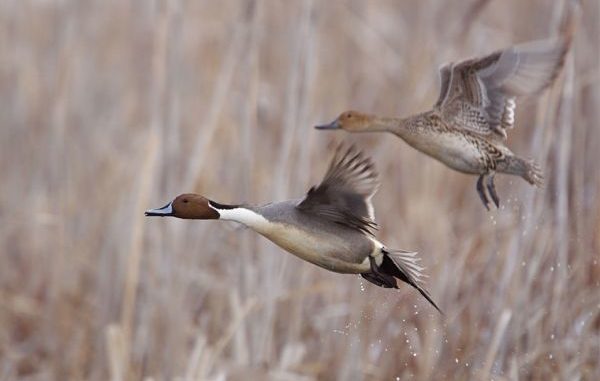
Southeast Louisiana transect lines likely to not be completed by Friday, Reynolds says
Socked-in clouds out of Baton Rouge prevented Larry Reynolds from starting December’s aerial waterfowl survey as planned on Wednesday, but he flew 13 transect lines on Thursday in Southwest Louisiana from the Texas line eastward to Rayne.
The state’s waterfowl study leader with the Louisiana Department of Wildlife and Fisheries reported seeing a good number of mallards along the coastal transects, but suspects the December survey could potentially be lower overall than the roughly 3 million birds estimated in the state just last month.
“There’s been a redistribution of birds toward the ag habitat in Southwest Louisiana,” Reynolds said. “There was definitely fewer ducks on the transect lines through the marsh ….
“I bet I counted 75,000 mallards myself. I don’t know what my partner saw, but it was good. I bet I counted more mallards than shovelers. But based on what I saw today from one-half of the plane, I would be surprised if our December estimate was 3 million birds.”
Duck season reopens statewide in all three zones Saturday morning, so the missed day of flying likely means hunters in Southeast Louisiana will have to head to their blinds without seeing any of Reynolds’ survey numbers.
And unfortunately, if he’s unable to complete all 14 remaining transect lines on Friday — including the last line at the mouth of the Mississippi River that contained the most birds in Southeast Louisiana in November’s survey — those missed lines won’t be flown at a later date because of the season opening again.
“Conditions change as soon as hunters hit the fields,” he said. “It means my estimates are no longer comparable. If I fly a survey that misses the one transect line with the biggest amount of birds, then my estimate is bupkis.”
On Thursday’s flight over Southwest Louisiana, Reynolds said out of transect lines 3 through 7 over Sabine, Cameron Prairie and Lacassine, only one line contained more birds than in November, he said.
“There were smaller groups of gadwalls and smaller groups of green-wings, but there were a lot more mallards,” Reynolds said. “We saw a pretty fair number of mallards today, but it didn’t compensate for the fewer numbers of gadwall and green-wings that we were seeing compared to November.
“Where those big piles of gadwalls were in November, they’ve probably eaten that food out and have had to move to other places.”
The loss in the marsh appeared to create big gains in the ag fields north of Lacassine National Wildlife Refuge, southwest of Gueydan and north of White Lake Wetlands Conservation Area and east of Grand Lake.
“Those were three places we hit the mother lode of ducks,” Reynolds said. “There were big bunches of birds. Where I saw birds in the ag, I saw a lot of birds.”
Recent heavy rains have water in the marsh elevated again, but Reynolds noted that he saw submerged aquatic vegetation just about everywhere he flew on Thursday.
“It was coming down to about the perfect marsh water level for foraging, but now it’s back up a little bit,” he said. “There were places where the marsh was flooded out. We could use a little less water in the marsh of Southwest Louisiana, but it’s not bad.
“It’s not optimum habitat conditions in the marsh, but it’s not bad.”
He cautioned hunters that this summary of Thursday’s flight came before he transcribed any numbers, crunched the data to generate any estimates or discussed in detail with his co-observer what his impressions were from the other side of the plane.
He did confirm the aerial survey in Northwest Louisiana was six times what was counted in November, and Northeast Louisiana was 30 percent higher than in November due to big increases in diving ducks.
Catahoula Lake was down from November with about 123,000 birds, all canvasbacks and ringnecks. But Reynolds said the scaup survey on Lake Pontchartrain and Lake Borgne showed more than 200,000 birds, including a record on Lake Borgne.
With less daylight and only six good hours of light conducive to counting birds without being blinded by the low angle of the afternoon sun, Reynolds said he and his crew would do their best on Friday.
“We’re going to fly hard and see what we can get done,” he said. “Who knows what I’m going to see on Friday?”


